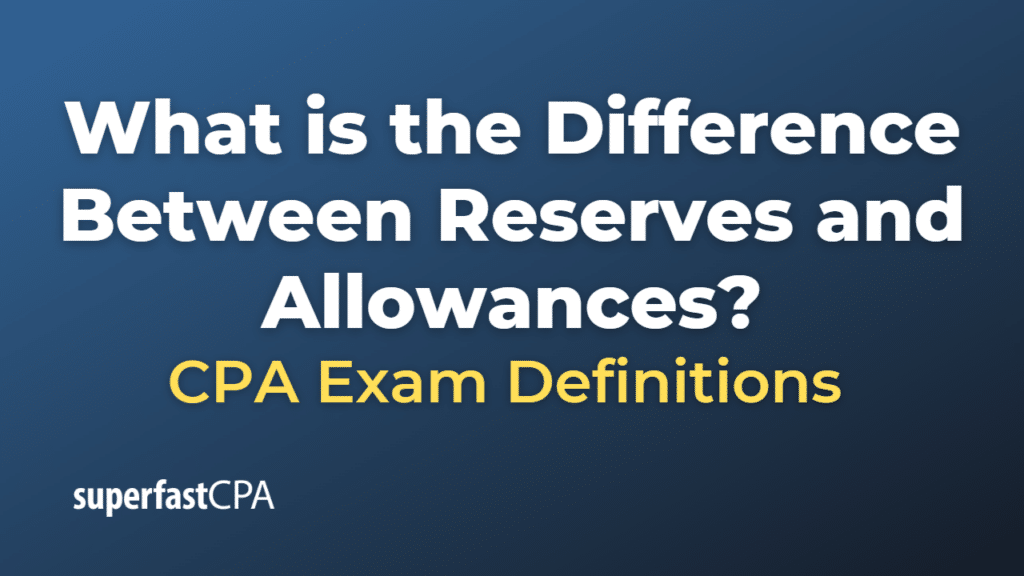Difference Between Reserves and Allowances
The terms “reserves” and “allowances” both refer to amounts that a company sets aside to cover future liabilities or losses. However, they are used in different contexts and for different purposes.
- Reserves:
Reserves are amounts that a company retains from its earnings for various purposes, such as business expansion, paying off future debt, or covering future expenses and emergencies. They act as a form of internal insurance, ensuring that the company has a financial cushion to handle uncertainties.There are different types of reserves. For example, retained earnings is a type of reserve that represents the accumulated portion of net income which is not distributed to shareholders as dividends. Capital reserves are often set up using profits from non-operating activities, such as the sale of a fixed asset. - Allowances:
Allowances, specifically in the context of “allowance for doubtful accounts” or “allowance for bad debts,” represent an estimate of the portion of accounts receivable that the company expects will not be collected due to customer defaults. This is recorded as a contra asset account on the balance sheet, reducing the total value of a company’s accounts receivable.The allowance method follows the GAAP principle of conservatism, ensuring that assets are not overstated and that potential losses are accounted for as soon as they are reasonably expected.
To sum up, while both reserves and allowances are forms of financial provision for future uncertainties, reserves typically refer to profits set aside for various general future needs, while allowances refer specifically to estimated uncollectible accounts receivable.
Example of the Difference Between Reserves and Allowances
Let’s consider hypothetical examples to illustrate the difference between reserves and allowances:
Example of Reserves:
Suppose TechCorp Inc., a technology company, earned a net income of $5 million in the financial year 2023. However, the company decided not to distribute all these earnings as dividends to shareholders. Instead, it retained $2 million in the business as reserves.
TechCorp plans to use these reserves for different purposes, such as funding research and development for a new product, replacing or upgrading equipment, or to ensure they have sufficient cash on hand for unexpected expenses or emergencies. This reserve allows TechCorp to fund these activities without having to take on additional debt or issue more shares.
Example of Allowances:
Now, let’s consider a retail company, ShopMart, which has accounts receivable of $1 million on its balance sheet, representing the money owed to it by its customers. However, based on past experiences and current economic conditions, ShopMart predicts that 5% of its receivables might not be collectible due to customer defaults.
As a result, ShopMart creates an allowance for doubtful accounts of $50,000 (5% of $1 million). This allowance reduces the reported accounts receivable on the balance sheet to $950,000. The $50,000 doesn’t represent an immediate cash loss, but it reflects ShopMart’s anticipation that some portion of its receivables will not be collectible, adhering to the principle of conservatism in accounting.
In these examples, TechCorp’s reserves represent retained earnings that can be used for various future needs, while ShopMart’s allowance represents an estimation of future credit losses.













